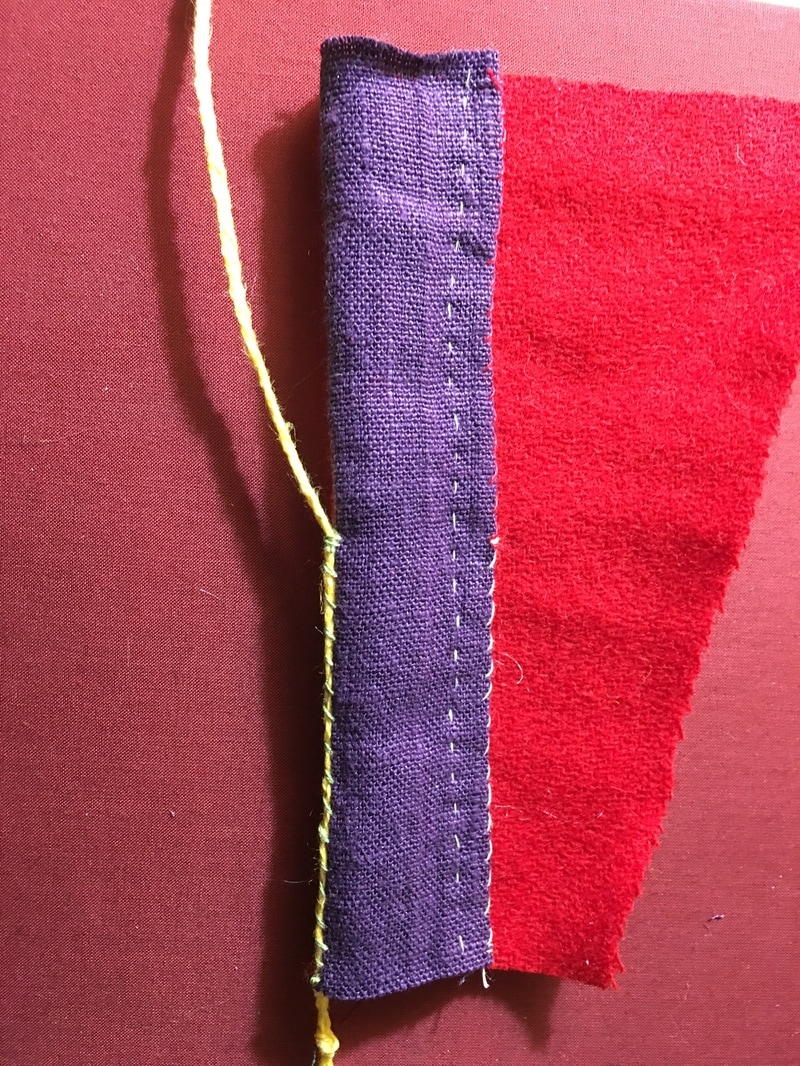(Note If you bring up wool to many people, especially in America, and the first thing they think of is the itchy sweater that their grandmother knit for them (mine was red). These memories can often make people shy away from wool fabric for reenacting purposes, but the reality is that for most of us, that would have been the choice material for our persona. In fact, some very strict groups have requirements that state you have to make your garments out of wool to even participate. Inevitably, this brings up the conversation about someone's wool allergies and what to do about that.
First thing that needs to be understood is that no one is actually allergic to wool itself, unless, of course one is also allergic to the hair on their own head. Wool is made of keratin, just like our own hair and finger nails. There are, however, some people who have reactions to it, so understanding the actual cause of the reaction is important.
- Scouring Agents: When wool is processed it is "Scoured". This is removes the lanolin (the natural oil of the sheep) before spinning. Historically, this could be done with a variety of methods, including something as simple as repeated soaking in hot water. In modern cloth, they use harsh chemicals to manage this work. Some of the chemicals might be left in the material, which can cause reactions.
- Lanolin: As mentioned before, lanolin is a wax secreted by glands of the sheep. It helps water to be shed from the wool and also helps protect the animal's skin. Not all scouring processes remove every bit of lanolin, so it is possible to have a reaction to lanolin if you are sensitive to it.
- Sizing: This is a chemical that is added after the cloth is made, to help best present it for commercial display. This can also cause allergic reactions. I know someone who will get puffy red hands after handling some types of cloth in a fabric store or even clothes hanging on racks in retail stores.
- Dye: Occasionally certain fabric dyes might cause sensitivity in some individuals.
http://www.dharmatrading.com/chemicals/synthrapol-detergent.html
There is one other factor, and likely it is the most common one, that can make people shy away from wool. That is the "scratchiness" of the fiber itself. This reaction can be excessively annoying and can happen for a couple of reasons.
- Coarseness: The wool itself might be of a low quality and thick. The wool fiber is covered with fine, overlapping scales. Coarse wool has more coarse scales, while fine wool has scales that lay more flat. The former can be more irritating.
- Spinning: If yarn is loosely spun, there might be hairs that escape the shaft of the yarn and that poke out. This creates a fuzzy look that we often associate with woolens, but these individual fibers might irritate sensitive skin in some people.
Also look for a more fine cloth. Some vendors, such as Burnley & Trowbridge, sell swatch sets of their cloth. I recommend ordering swatches from them and other outlets to see which materials might best suit your needs an level of sensitivity. There are 100% wool fabrics out there that surprisingly don't actually "feel" like wool at all.
Another factor that comes into play is the perception that all wool will be hot and heavy. Much of the cloth from Norse finds is exceptionally fine with very high thread counts. They had lightweight wools! As mentioned above, poke around online and order swatches to see the variety of cloth that really exists. I prefer wool for my veils and headdresses. A wool gauze is no warmer in the summer than linen and my handwoven wool dress is no warmer than a linen of the same weight. Avoid coatings or heavily fulled materials if heat is a concern.
Another option, for those that do not have a chemical sensitivity, or who can wash out the offending chemicals, but still find wool uncomfortable, is to make sure that the wool fabric does not touch the more sensitive areas of your body, such as your neck. For women doing Viking age, this can be simple as you can wear a wool aprondress over a linen underdress. However, if you need a wool tunic you can wear a wool one over linen and then you can add a linen facing inside the neckline and inside the sleeves to prevent the wool from coming in contact with your skin. Tacking it down on the inside with small stitches will leave it invisible from the outside completely and adding a wear cord at the opening edge will further remove it from your skin.
(Note that this post is not an insistence everyone wear wool, but I do know many people who previously shied away from the fibre by working with it and figuring out how to make it work for them. As always, your own best comfort is important so be reasonable as you test your limits!)





 RSS Feed
RSS Feed